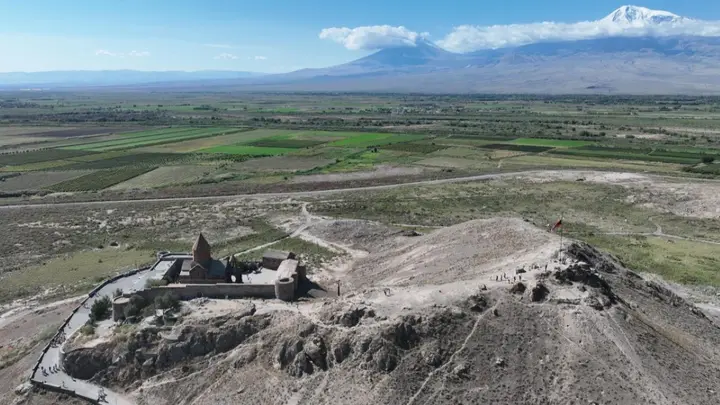Tuesday, October 15, 2024

Archaeologists recently uncovered one of the world’s oldest Christian churches in the ancient city of Artaxata, Armenia, dating back to the 4th century AD.
German and Armenian archaeologists from the University of Münster and National Academy of Sciences of Armenia teamed up to discover one of the oldest Christian churches. Archaeologists have uncovered one of the world’s oldest Christian churches in the ancient city of Artaxata, located in modern-day Armenia.
The remarkable discovery, dated to the 4th century AD, adds significant weight to Armenia’s status as the first Christian state, a transformation that occurred in 301 AD when King Tiridates III converted to Christianity under the influence of St. Gregory the Illuminator.
The excavation unearthed a church with an octagonal structure and cruciform extensions, an architectural style that reflects early Christian memorial buildings. The church is approximately 100 feet in diameter and features a mortar floor, terra-cotta tiles, and fragments of Mediterranean marble, indicating its lavish design.
Historical Significance of the Discovery
Archaeologists have long been intrigued by Armenia's pivotal role in Christian history, and this discovery further reinforces the country's importance. Radiocarbon dating has placed the wooden platforms within the church to the mid-4th century AD, making this one of the oldest archaeologically documented Christian churches in the world.
Professor Achim Lichtenberger from the University of Münster described the finding as "sensational evidence for early Christianity in Armenia".
The church is located in Artaxata, which was the capital of the Kingdom of Armenia for nearly six centuries. This region is deeply intertwined with the roots of early Christianity, particularly the story of St. Gregory the Illuminator. According to tradition, Gregory healed King Tiridates III from madness, leading to the king's conversion and the declaration of Armenia as a Christian state, the first in history.
Architectural and Cultural Insights
The octagonal design of the church is particularly noteworthy, as such architectural features were rare in the region but are well-known in the Eastern Mediterranean. This indicates strong cultural and religious ties between Armenia and other early Christian communities around the Mediterranean.
The church’s ornate decoration, with marble imported from distant regions, also suggests that it was an important center of Christian worship.
This discovery is part of an ongoing excavation project in the Ararat Plain, an area with deep historical and biblical significance. The researchers used geophysical methods to study the site, and they plan to continue their work in hopes of uncovering more insights into the spread of early Christianity.
Finance
As a dedicated journalist for the Milwaukee Post, our staff writers bring a keen eye for detail and a commitment to in-depth reporting on local and national issues. With a focus on delivering accurate, timely news, they cover a wide range of topics from politics and business to community events, offering readers comprehensive insights and thoughtful analysis.
Subscribe to
The Milwaukee Post
$8.30/month
Get access